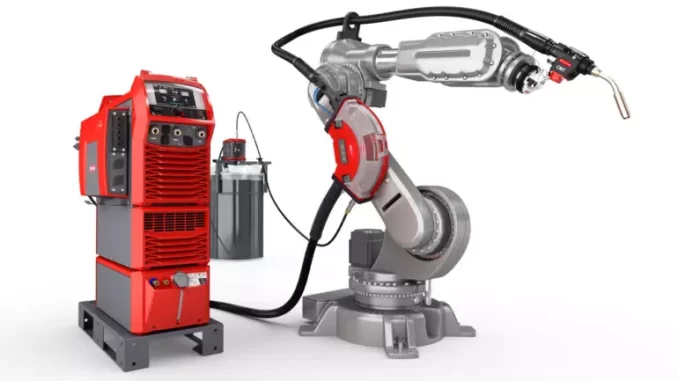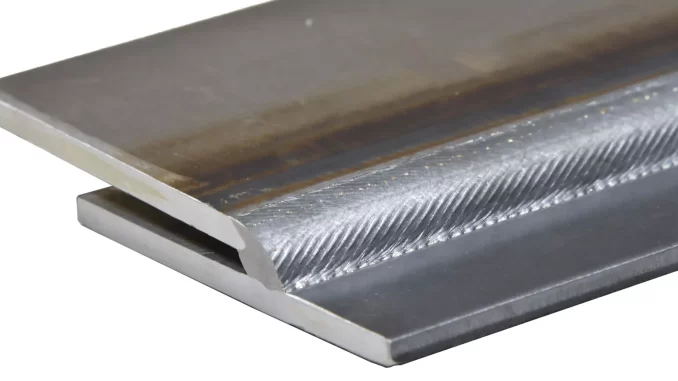
WireSense, TouchSense, SeamTracking, and TeachMode are patented assistance systems for robotic welding designed by Fronius to improve weld quality and increase efficiency in industrial manufacturing. The welding wire acts as a precise sensor for the robot and simplifies welding path programming or detects deviations in the component position as well as air gaps over the course of the seam. Using this data, the robot can then correct the weld path—adjusting it precisely based on the identified position points—to save material, time, and cost, as rework and component rejects are no longer an issue.
In spite of advanced robot technology and almost seamlessly interconnected systems, inaccuracies and deviations repeatedly occur in industrial production. In some cases, minimal material differences or imprecise clamping devices can have a negative influence on the welding result and potentially cause time-consuming rework, costly component rejects, or huge cycle time losses.
Integrators often resort to using optical measuring systems to avoid having to make time-intensive manual readjustments. But laser and camera systems are expensive to buy and maintain, plus require space, which restricts access to the component. Fronius has the answer in the form of high-tech solutions for the intelligent iWave, TPS/i, and TPS/i TWIN welding systems that require neither a camera nor manual readjustment
Perfect welds one after the other despite clamping and component tolerances
The TouchSense assistance system has been specially developed for fillet welds. Before each weld, the robot automatically touches the sheets being joined at the start and end of the weld. It does not matter whether it is the wire electrode or gas nozzle that makes contact: the signal is always clearly assigned and correctly transferred. The low sensor voltage creates a short circuit when the torch touches the workpiece, which enables the robot to precisely determine the weld position and adjust the welding parameters dynamically. Another helpful feature is the immediate warning issued if a spatter bridge forms between the contact tip and gas nozzle, allowing this to be cleaned promptly to increase precision and quality in production.

WireSense—unique precision thanks to CMT technology
What’s so clever about WireSense is its simplicity. “Adding special controller software to our highly sensitive and dynamic CMT drive turns the welding wire into a sensor that can identify contours or air gap deviations on the component,” reports Philipp Schlor, Strategic Product Manager, Industrial Welding Solutions, at Fronius International. To ensure precision control of the welding wire, the Fronius welding system simply needs to be equipped with a CMT-ready system. The Welding Package, i.e., the CMT (Cold Metal Transfer) welding process itself, is not required.
CMT-ready systems consist of a wirefeeder on a wire drum or wire spool, a wire buffer, and a CMT Robacta Drive, in other words a second wirefeeder on the torch itself. A reversing wire movement, which takes place at around 100 Hz, causes the electric motor in the drive unit to scan the metal surface with the wire. It is this high-frequency scanning of the workpiece that provides the necessary levels of precision. Even if the surface being scanned is uneven, such as the sheets lying at an angle, the edge can still be detected and measured without any difficulty.
Detecting the edge position and air gap height
“Our revolutionary WireSense technology uses the scanning function of the reversing CMT wire movement to determine the exact position of the component and edge as well as air gap heights. Steel, stainless steel, and aluminum sheets from 0.5 to 20 millimeters thick can be scanned quickly and precisely,” emphasizes Schlor. Every raising and lowering operation on the component can be recorded extremely accurately relative to a reference point specified at the start of the scanning process. In just seconds the robot has compared the taught positions with those measured, or in other words it has checked the stored values against the actual position data. If it detects any differences, the course of the seam is adjusted accordingly in the robot’s coordinate system and the weld is produced in the right place.
“WireSense opens up a multitude of possibilities for robot integrators to identify high-quality solutions for challenging welding tasks,” reveals Schlor: “The edge being welded doesn’t necessarily have to be detected. Any fixed reference edge on the component, such as the component edge or a notch, can serve as the starting point from which welding is to take place at a certain distance. This enables even difficult-to-detect parts, like a rounded sheet, to be welded at the desired position.”
Reliably bridging air gaps
With WireSense the wire electrode becomes a height sensor, allowing air gaps to be determined on lap joints using the precisely measured sheet edge height. To achieve perfect results it is possible to specify in advance which jobs stored on the Fronius welding system should be called up for different air gap sizes. This allows the robot to always respond appropriately and weld with the welding parameters that are ideal for the air gap dimension in question, preventing welding errors and time-consuming rework.

SeamTracking: seam tracking during welding
This assistance system plays to its strengths when it comes to manufacturing railroad or construction vehicles. When thick sheets or long seams are being welded, the heat input can lead to component distortion. To ensure the robot still welds in the right location, a system is needed which reliably detects the welding position during welding, such as on a fillet weld or prepared butt weld.
To do so, the robot moves back and forth between the two sheets during welding. The controller converts the actual values identified into signals for the robot controller. The robot then uses these signals to identify the specified welding position, or possible deviations from it, and corrects the path automatically to ensure welding takes place reliably and in the correct location.
Program robots up to 30 percent faster
The key to high quality lies in teaching the correct welding path. The tried-and-tested TeachMode assistance system helps the welder set the weld seam positions on the robot, making the programming process extremely easy. The reversing wire movement prevents the wire from bending in the event of contact with the component and saves the user from having to remove the deformed wire or re-measure the stickout.
Wire-based assistance systems save time, money, and resources
Using the existing wire electrode as a sensor not only reduces expenditure and maintenance costs for additional sensor hardware, but also frees up space as access to the component is not restricted in any way. At the same time, the Fronius assistance systems cut rejects and time-consuming rework because welding is performed reliably at the correct location. Subsequent re-programming of robot paths is also minimized as the robot can correct the weld seam path by itself. All these factors increase efficiency in production while also reducing the amount of time spent and material used.










































